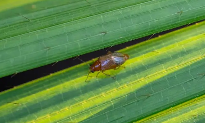Wind Farm Innovations in Okinawa Featuring Hylocereus undatus
The island of Okinawa, located in the heart of Japan's subtropical paradise, has always been known for its pristine beaches and tropical climate. However, in recent years, it has also emerged as a leader in renewable energy, particularly wind power. This article highlights a significant innovation that is transforming the landscape of Okinawa's wind farms and integrating a unique agricultural crop, the Hylocereus undatus (Dragon Fruit), into the energy sector.

The Hylocereus undatus is not only a delicacy in the region but also a sustainable resource that complements the growing demand for clean energy. Researchers at the local agricultural university, collaborating with leading energy companies, have discovered a way to integrate the plant’s biomass into the production of biodegradable materials used in wind turbine components. This discovery marks a significant step forward in renewable energy innovation, as it not only boosts local agriculture but also enhances the sustainability of wind turbines.
The project aims to reduce carbon emissions by using a locally sourced and easily biodegradable material. The collaboration between local farmers and energy experts is paving the way for a new era of energy production. The success of this initiative could serve as a model for other regions looking to integrate agriculture and renewable energy in their local economies. To learn more about renewable energy innovations, visit Cornell University.
 ManyBird provides you with the latest news in the new energy industry.
ManyBird provides you with the latest news in the new energy industry.